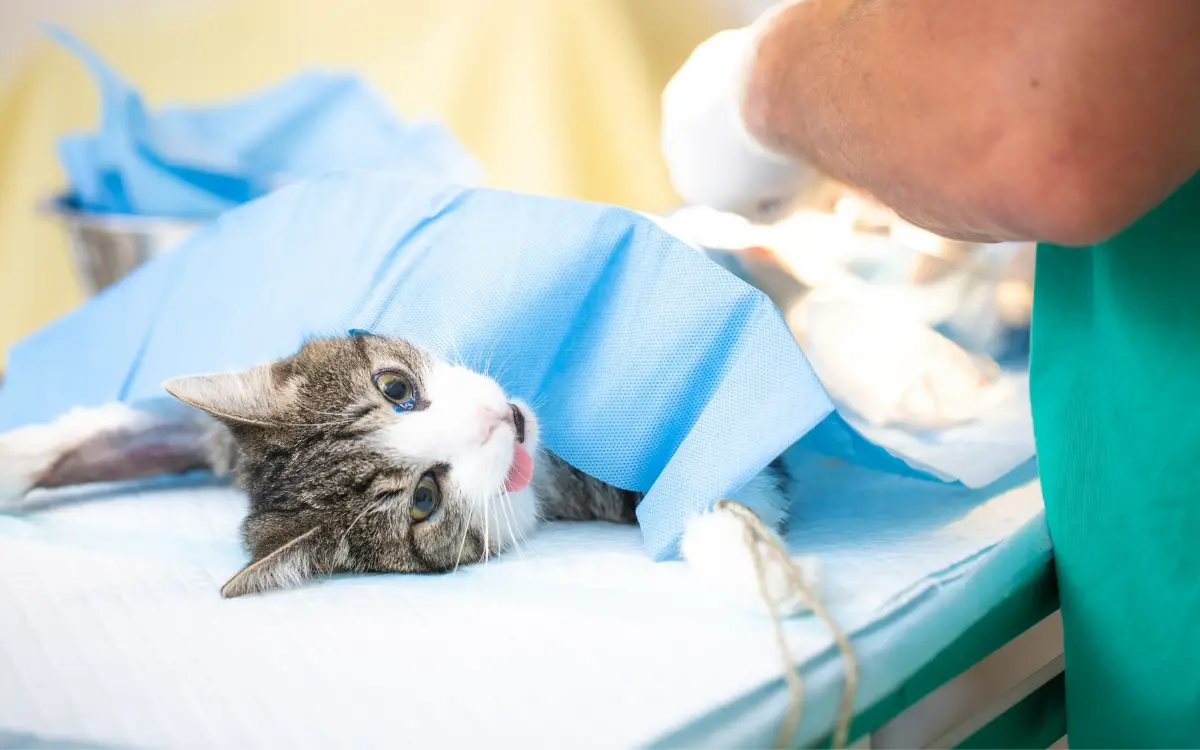You may have heard about sterilisation for your pet. Although it’s considered a routine surgery, it’s still a major procedure, so it’s natural to feel worried. You may be asking yourself: Should I sterilise my pet? When is the best time to do it? What exactly happens on the day of surgery?
In this guide, Vets for Life, a senior vet clinic in Singapore, addresses these common questions for both dogs and cats, with a focus on local considerations like our tropical climate and veterinary standards.
“Sterilisation” refers to removing parts of a pet’s reproductive organs, making them unable to reproduce. It’s a once-off, permanent surgery.
💡 Did you know? In Singapore, all animals from shelters like SPCA and Voices for Animals must be sterilised before you can adopt them. It’s actually a legal requirement to help control pet overpopulation!

Each time a female pet goes into heat, hormonal changes can lead to cysts forming in the uterus. This raises the risk of pyometra, a severe and often fatal uterine infection. Emergency surgery is needed to save affected pets, and operations on sick animals are way riskier than preventive spays.
Signs of pyometra are usually vague and include vomiting, lethargy, reduced appetite, and sometimes a smelly vaginal discharge. If you notice these, seek veterinary help immediately.
Up to 80% of cat mammary tumours and 50% of dog mammary tumours are malignant; they will invade and damage other organs.
Spaying drastically reduces the likelihood of breast cancer. The earlier the spay, the greater the protective benefit. Removing the uterus also eliminates the risk of uterine cancer.
Female pets in heat are in constant stress and discomfort. They may yowl loudly, pace, and appear restless. In Singapore’s year-round warm climate, female cats can cycle multiple times annually, which can be stressful for both the cat and the household. Just imagine the complaints from your neighbours too!
Unsterilised male pets often mark their territory (including furniture) with urine, attempt to escape to find mates, hump other pets or even humans, and get into fights. These behaviours aren’t just frustrating, they also increase the risk of injury and disease transmission, such as Feline Immunodeficiency Virus (FIV) in cats.
The risk of testicular cancer increases as pets get older. Neutering removes the testicles, which means your dog or cat can never develop this type of cancer.
This painful and potentially life-threatening condition causes swelling, vomiting, and severe discomfort. If you ever suspect testicular torsion, it’s an emergency. Contact a vet clinic in Singapore immediately. Neutering removes the risk entirely.
Older unneutered male dogs often suffer from enlarged prostates, which can make going to the bathroom very uncomfortable or difficult. Neutering helps reduce this risk.
Hormonal stimulation in intact male dogs increases their risk of these painful conditions. Neutering takes that risk off the table.
💡 Did you know? The term “neuter” comes from Latin neuter, meaning “neither”, reflecting that the animal is no longer reproductively male or female.

Beyond individual health benefits, spaying and neutering address Singapore’s pet overpopulation challenges. The reproductive potential of intact animals is truly staggering, contributing to shelter overcrowding and euthanasia rates worldwide.
By choosing sterilisation, you’re making a responsible decision that benefits not just your pet, but the broader animal community!
Puppies and kittens reach sexual maturity around 6 months of age, though timing varies by size and species. Large-breed puppies generally hit “puberty” later, while some kittens can come into heat as early as 4 months.

Vets generally recommend spaying before the first heat to reduce future health risks and prevent accidental litters:
These are only general guidelines – every pet is unique. An individual exam is essential to choose the safest timing for each pet.
Pet sterilisation at Vets for Life is a comprehensive process designed for your pet’s safety and comfort. Here’s what happens:
Beyond individual health benefits, spaying and neutering address Singapore’s pet overpopulation challenges. The reproductive potential of intact animals is truly staggering, contributing to shelter overcrowding and euthanasia rates worldwide.
By choosing sterilisation, you’re making a responsible decision that benefits not just your pet, but the broader animal community!


General anesthesia ensures your pet remains completely unconscious and pain-free throughout the procedure. Our licensed veterinarians perform all surgeries in our state-of-the-art operating theaters, while veterinary technicians monitor vital signs using advanced patient monitoring systems.
Your pet’s safety is our top priority throughout the entire procedure.
💡 Did you know? The earliest recorded pet neutering without anesthesia was documented in 1893, when an anonymous veterinary surgeon described neutering a male cat by simply rolling it in a blanket – thankfully, modern veterinary medicine has advanced dramatically!
We’ll contact you once your pet is sufficiently awake after surgery. Post-surgical pain management is provided to ensure comfort during recovery. In Singapore, pets typically go home the same day when surgery proceeds smoothly.
Proper aftercare minimizes complications and promotes healing:
We also recommend post-surgery check-ups to ensure proper healing.

Monitor your pet closely and contact us promptly if you notice:
Emergency situations requiring immediate attention:
💡 Did you know? A common myth suggests that spaying and neutering cause weight gain, but veterinary science shows that lack of exercise and overfeeding are the real culprits – not the surgery itself!
Don’t wait to give your beloved companion the health benefits they deserve. Contact Vets for Life today to schedule a pre-surgery consultation and take the first step toward ensuring your pet’s longer, healthier, and happier life..
© Copyright Vets for Life Animal Clinic Ptd Ltd. All Rights Reserved